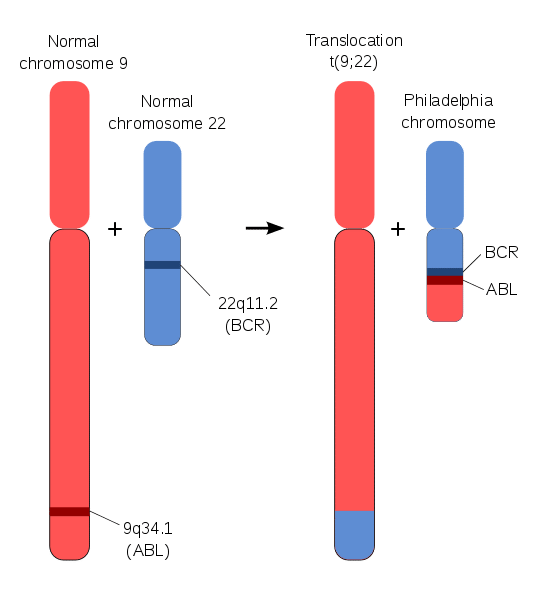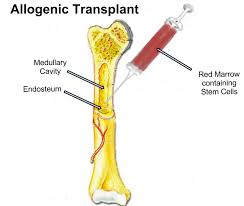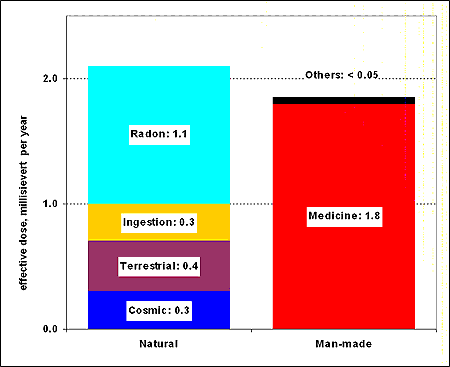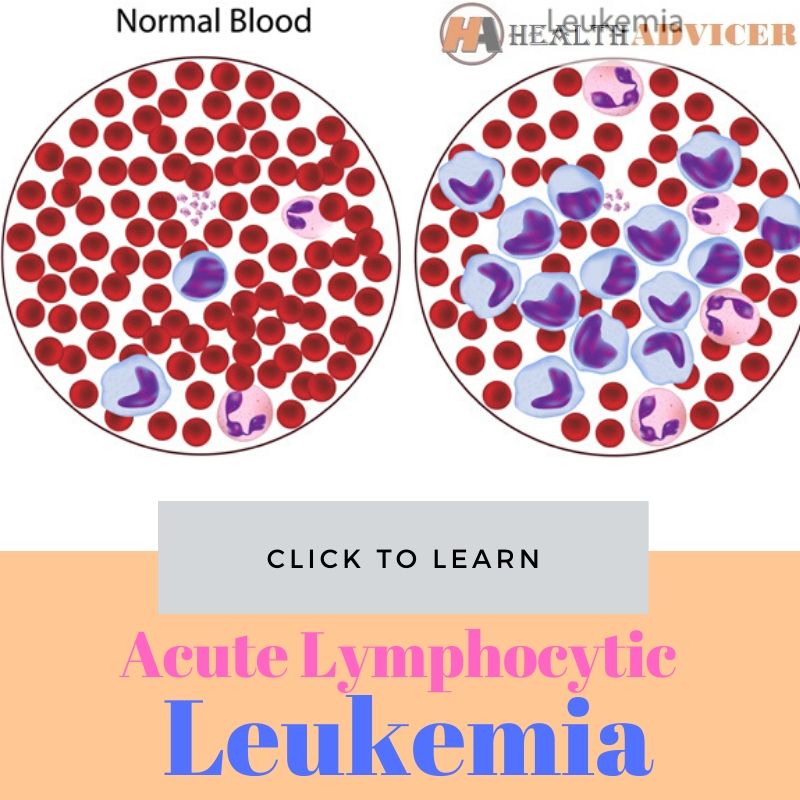Acute lymphocytic leukemia refers to a type of cancer. It affects the blood as well as the bone marrow. Bone marrow is the spongy tissue residing inside the bone. It is responsible for making the blood cells needed for your body. The condition is also known as acute lymphoblastic leukemia or ALL. It is one of the most common types of childhood cancers. But, it can also occur in adults. While the chances of recovery in children suffering from the condition are high, the adults have reduced chances of complete cure. The condition progresses rapidly over some time (acute). So, it creates immature blood cells in place of the mature blood cells. It starts affecting the white blood cells (lymphocytes) in your body. Read ahead to know more about the deadly disease and take steps to manage it from affecting your life.
Symptoms Of Acute Lymphocytic Leukemia

- Fever
- Bone pain
- Bleeding Gums
- Frequent Infections
- Swollen lymph nodes causing lumps underarm, neck, groin or abdomen
- Severe or frequent nosebleeds
- Pale skin
- Weakness or decrease in energy
- Fatigue
- Shortness of breath
You need to make an appointment with your doctor when you or your child exhibit such signs persistently. The symptoms indicate a larger issue, which needs immediate medical attention. In most of the cases, the early signs of ALL mimic flu-like symptoms. Unlike flu-symptoms that improves over time, ALL signs do not go away. So, you need to see a doctor evaluate the signs and get a proper diagnosis.
Causes Of Acute Lymphocytic Leukemia

The condition occurs due to errors in the bone marrow cell’s DNA. Due to the error, the cells continue growing and divide at an abnormal rate. In normal cases, the healthy cells in the bone marrow stop dividing and eventually dies. But, the abnormal cell growth starts crows the healthy cells. The immature cells produced by the bone marrow develop into lymphoblasts (the leukemic white blood cells). They do not function properly and cause issues in your body. The exact reason for the DNA error or mutation remains unclear.
Risk Factors
While the exact reason triggering the condition remains a mystery, scientists have found some factors increase the chance of developing ALL. The factors that increase a person’s risk are:
Prior Cancer Treatment
Children and adults who have undergone certain types of radiation and chemotherapy have high chances of developing the disease. Radiation and chemotherapy are used to treat other types of cancers.
Radiation Exposure
People who get exposed to high levels of radiation can develop the problem. For example, survivors of a nuclear reactor accident or accidental exposure to radiation can develop acute lymphocytic leukemia.
Genetic Disorders
Children or adults suffering from genetic disorders can face a high risk of developing ALL. So, people with Down syndrome can develop the type of leukemia.
Having A Sibling With The Condition
Have a sibling with the condition increases your odds of developing the problem. So, those who have a brother or sister with ALL need to maintain caution.
Diagnosing Acute Lymphocytic Leukemia
You need to see a doctor when you suspect the problem. It is essential to get medical assistance for an accurate diagnosis. The tests can help diagnose the issue and its subtype. The series of tests also helps in determining the following:
- Offer an idea to the healthcare professional on how the disease will progress
- Find an appropriate treatment plan to manage the condition
The doctor will suggest the following tests to detect the presence of ALL conclusively:
Blood Tests
Your doctor suggests a complete blood count (CBC) test. It measures the total white blood cells and red blood cells. If the tests reveal too many white blood cells and less red blood cells as well as low platelets, it indicates the presence of leukemia. Another blood test can detect the presence of blast cells. The doctor detects the presence of the immature cells in the bone marrow.
Bone Marrow Test

The bone marrow test involves taking a sample of the soft tissue from the breastbone or hip bone. The test also known as bone marrow aspiration uses a special needle to extract the sample. It is tested in the lab to detect the presence of cancerous cells. The test is also useful in detecting the extent of cancer. In the lab, the technicians assess the blood cells to classify it into different types. It is usually classified into types based on the shape, size, and other molecules (genetic) features. The technicians also look for changes in the cancer cells. So, it helps detect if the cancerous cells started from T lymphocytes or B lymphocytes. This information helps devise a proper treatment plan that will offer the desired results.
Imaging Tests
The imaging tests are useful in detecting the spread of cancer to other parts of the body. So, the sophisticated imaging tests like x-ray, CT scan or ultrasound scan can detect if cancer has spread to the spinal cord, brain or other major organs in your body.
Spinal Fluid Tests

Also known as the lumbar puncture test, it extracts the CSF sample from the spine. So it is also called a spinal tap. CSF is the fluid that surrounds the brain as well as the spinal cord. It is tested in the lab to detect the cancerous presence in the spinal fluid. So, your doctors can determine if cancer has spread to the CSF or not.
Based on the diagnosis, your doctor suggests the ideal treatment plan. It helps manage the condition and offer you relief from the uncomfortable symptoms.
Treatment For Acute Lymphocytic Leukemia
The treatment for ALL depends on the stage of the disease. The treatment for the condition is classified into different phases. So, based on the affected person’s condition, your doctor can suggest the treatment phase.
Treatment Phases Of Acute Lymphocytic Leukemia
Each treatment phase tries to destroy the cancer cells and offer relief from the symptoms associated with it. So, what happens during each phase of the treatment? Read ahead to know more about it.
Induction Phase
It is the first phase of the treatment plan. During the phase, the doctor tries to kill most of the cancerous cells developed in the blood and bone marrow. So, the phase tries to restore normal blood cell production.
Consolidation Phase
The therapy offered during the phase is also known as post-remission therapy. The phase aims to destroy the remaining cancerous cells (if any) in the body. So, the phase tries to kill the cancer cells, which may remain in the spinal cord or brain.
Maintenance Phase
During the third phase of the ALL treatment, the doctor tries to prevent the destroyed leukemia cells from re-growing. So, the treatments offered during the stage have a low dose. It is given over a long period to ensure the destruction of cancer cells. So, it often takes several years.
Preventive Phase
The treatment is offered to the spinal cord during the phase. During each phase, the ALL affected person receives additional treatment to kill the leukemia cells in the CNS (central nervous system). During the treatment phase, your doctor injects chemotherapy drugs directly into the CSF covering the spinal cord.
The treatment phase fro acute lymphocytic leukemia spans for two or three years depending on your condition.
Treatment Methods For ALL
The different types of treatment available for ALL are:
Chemotherapy
It uses drugs to kill the cancer cells in your body. In most cases, the doctor uses the therapy during the induction phase. So, adults and children affected by ALL receive chemotherapy as the first line of treatment. It is also used in consolidation and maintenance phases.
Targeted Therapy

As the name suggests, the drugs specifically target the abnormalities in the cancer cells. These abnormalities aid in the growth and thriving of the cancer cells. In patients suffering from ALL, doctors have found a certain abnormality called the Philadelphia chromosome. In such cases, the targeted drugs attack the cells containing the specific abnormality. Usually, targeted therapy is used during or after chemotherapy.
Radiation Therapy
Radiation therapy uses high-intensity x-rays or proton beams to destroy the cancer cells. In some cases, the cancerous cells spread to the CNS (Central Nervous System). Radiation therapy is effective in such cases.
Bone Marrow Transplantation

It is also referred to as a stem cell transplant. It is usually opted by the doctor during the consolidation phase. So, people who face a high risk of relapsing or suffer from relapse need the transplant. The procedure helps the ALL affected person to re-establish a healthy bone marrow. So, leukemia affected bone marrow is replaced by a healthy bone marrow transplanted from another person. Before the procedure, the patient needs to undergo high doses of radiation therapy or chemotherapy. It destroys all the cancer-producing bone marrow. Then, the affected person receives a healthy marrow from an allogeneic transplant (compatible donor).
Clinical Trials
Clinical trials are ideal when conventional treatments fail to offer results. The affected person can undergo new treatments or new methods of using the existing treatment. But, the risks and benefits of the clinical trials remain uncertain. So, you need to talk to your doctor in detail about the pros and cons associated with the clinical trials.
Treatment For Older Adults
People over sixty years of age tend to experience more complications due to ALL treatments. ALL treatments offer better results in children and adults. So, older people tend to have a worse prognosis of the disease.
You need to talk to your doctor about the different options available based on your specific condition. It is important to make the right choice based on health goals and preferences. Some people in the advanced stages opt-out of getting treatment. They instead focus on the option to improve the symptoms and enhance the quality of life. It is usually detected by people suffering from advanced stages of leukemia. They want to make the most of the remaining time. Therefore, decide after researching all your options.
Alternative Medicine For Acute Lymphocytic Leukemia
You have no treatment available to completely cure ALL. But, some alternative therapies can offer you relief from the different side effects triggered due to cancer treatments. The side effects like nausea, pain or other issues can make children and adults uncomfortable. Therefore, you can try alternative options to make you more comfortable. You need to talk to your doctor and discuss the different options available to reduce the discomfort. The different options can at times interfere with treatment options like chemotherapy. So, always try the methods after consulting your doctor. You can ease the symptoms by following the options like:
- Acupuncture
- Meditation
- Massage
- Aromatherapy
- Relaxation Exercises
You can try the one that suits you the best. With the alternative therapy options, you can improve the quality of your life.
Acute Lymphocytic Leukemia Coping And Support
When you or your loved ones suffer from cancer, you tend to feel disheartened. While the treatment options are successful, it is a long road to recovery. In most of the cases, the treatment for the disease lasts for two or three years. The affected person needs to undergo an intense treatment for the first three to six months. When you undergo maintenance therapy, it is easier to follow the normal routine. So, children can go to school and adults can continue their work. The different stages of the treatment plan can affect personal mental health. So, it is essential to find the right technique for coping. You can follow the following steps to cope with the disease and find the strength to face the treatment:
Get All Necessary Information
You need to gather all the necessary information about the disease. Try to access the information from your doctor, look for information from the local library or through searching the internet. Proper information can help you make the right treatment decisions. You need to talk to your doctor about the specific type you suffer. It will help you narrow down the search and gather information accordingly.
Find Answers For Your Doubts
Before each appointment, write down all the questions you need to ask your doctor. You can also get your doubts cleared by accessing information from authentic sources. Try to search for reliable websites, offering correct information that will not mislead you. Some of the sites offering correct information are:
- Leukemia & Lymphoma Society
- National Cancer Institute
Depend On Your Team
To deal with ALL, any hospital has a qualified team of experts who can help you manage the problem. The hospitals and pediatric centers have a panel of the following:
- Psychiatrists
- Recreation therapists
- Psychologists
- Child-life workers
- Dietitians
- Teachers
- Chaplains
- Social workers
These professionals have the skill and expertise to address a host of issues. The professionals can help children learn about the disease, explain the procedures, help find financial aid, and arrange necessary things during the treatment. You need to rely on the experts for getting suitable solutions to your problems. So, never hesitate to ask for help.
Explore Program For Children
Children who suffer from ALL can miss their school and feel isolated from their peers. So, try to find different programs to help such children. Major hospitals and non-profit groups offer several activities as well as services, especially for children suffering from the disease. You can access the right program that will entertain the children as well as their caretakers.
Make Others Understand
Others must understand your situation. You need to convey the issues, the treatment plan proposed by the doctor, prognosis, and the mental trauma you face to your close family as well as friends. A strong support system can help you have a positive outlook and manage stress.
Preventing Acute Lymphocytic Leukemia
It is not possible to prevent ALL as the exact reason triggering the problem remains unclear. But, genetic and non-genetic factors influence the development of the type of cancer. While it is impossible to prevent the development of the problem due to the genetic factor, you can take steps to catch the problem at its initial stage with certain steps. You can prevent non-genetic factors with lifestyle changes. With proper exercise, change in diet, or avoid exposure to harmful substances, you can reduce the risk associated with the disease.
Screening Of Cancer
People can inherit genes that can lead to the development of ALL. So, individuals who face a high risk of developing the disease need to undergo cancer screening. It can detect the condition early and ensure treatment for higher cure rates. You have to talk to your doctor about the regular use of certain tests or examinations to find the early signs. With early medical intervention, you can prevent the complication occurring due to the disease.
Take Folic Acid
The condition mostly occurs in children. It develops due to pregnant women getting exposed to various environmental factors triggering the problem. Taking folic acid during pregnancy can reduce the risk associated with developing ALL. Several studies have confirmed the observation associated with the same.
Reduce Anemic Incidence
Pregnant women who suffer from iron deficiency can give birth to children who face a high risk of developing ALL. So, gynecologists prescribe iron supplements for pregnant women who are anemic. In such a way, iron-deficient mothers can decrease the risk of having a child with a high probability of developing the disease.
Refrain From Drug Use
Parents who use drugs can conceive a child with a high possibility of developing the disease. Illegal drugs can affect the incidence of childhood ALL. So, a couple who is trying for a baby must stop using such harmful drugs.
Reduce Radon Exposure

Radon is a gas occurring naturally in the atmosphere. In most cases, the odorless, inert, and colorless gas appear in trace amounts. The radon gas disperses quickly when it is released outdoors. So, it poses no risk to your health. But, when gas exposure occurs in workplaces, homes or schools, it affects health adversely. The exposure can make your child susceptible to ALL.
Radiation Exposure
Pregnant women need to avoid radiation exposure. Prenatal radiation exposure can increase the chances of suffering from ALL. So, limit x-ray exposure. Women who are pregnant or suspect pregnancy need to tell their doctor. It is essential before undergoing any tests or medical procedures for other medical conditions. So, your doctor can suggest other methods to diagnose the problem without radiation exposure.
Conclusion
Many people with ALL have a good prognosis. The survival rates depend on different factors like medical history, the type of cancer an individual suffers, the stage of the disease, the characteristics of the disease, and the treatment you choose. With early diagnosis and swift medical intervention, you can get back the quality and quantity of your life. Children who suffer from acute lymphocytic leukemia have higher chances of surviving the disease. They also stay in remission for long periods. So, never ignore the symptoms associated with the problem and consult a doctor.
View Article Sources
